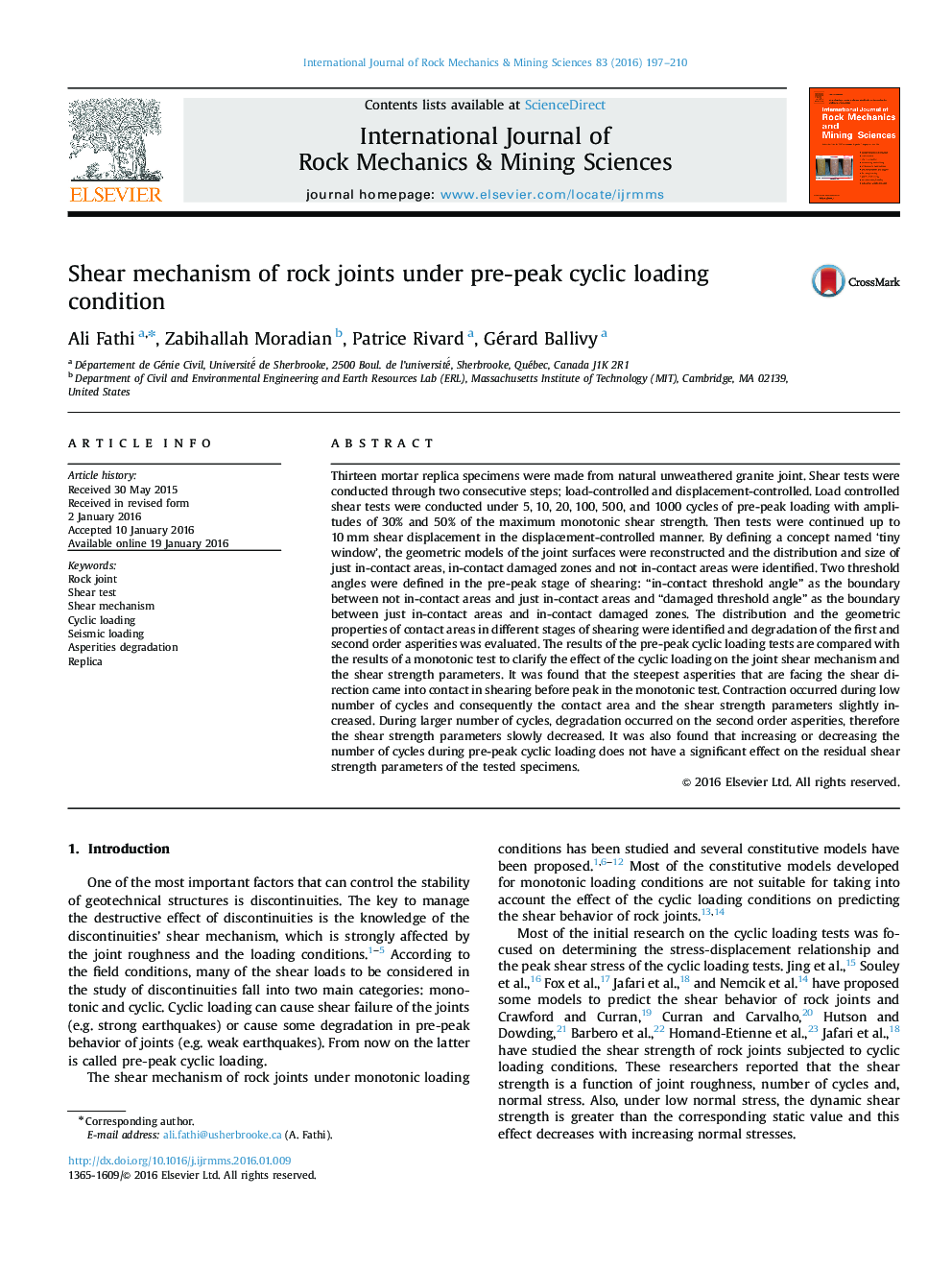| Article ID | Journal | Published Year | Pages | File Type |
|---|---|---|---|---|
| 809322 | International Journal of Rock Mechanics and Mining Sciences | 2016 | 14 Pages |
•The shear mechanism of asperities in 3D surfaces of rock joints is studied.•The geometric properties of contact areas are identified.•The pre-peak cyclic loading effect categorized into consolidation and degradation.•Consolidation occurred during low number of cycles.•During larger number of cycles, degradation occurred on the second order asperities.
Thirteen mortar replica specimens were made from natural unweathered granite joint. Shear tests were conducted through two consecutive steps; load-controlled and displacement-controlled. Load controlled shear tests were conducted under 5, 10, 20, 100, 500, and 1000 cycles of pre-peak loading with amplitudes of 30% and 50% of the maximum monotonic shear strength. Then tests were continued up to 10 mm shear displacement in the displacement-controlled manner. By defining a concept named ‘tiny window’, the geometric models of the joint surfaces were reconstructed and the distribution and size of just in-contact areas, in-contact damaged zones and not in-contact areas were identified. Two threshold angles were defined in the pre-peak stage of shearing: “in-contact threshold angle” as the boundary between not in-contact areas and just in-contact areas and “damaged threshold angle” as the boundary between just in-contact areas and in-contact damaged zones. The distribution and the geometric properties of contact areas in different stages of shearing were identified and degradation of the first and second order asperities was evaluated. The results of the pre-peak cyclic loading tests are compared with the results of a monotonic test to clarify the effect of the cyclic loading on the joint shear mechanism and the shear strength parameters. It was found that the steepest asperities that are facing the shear direction came into contact in shearing before peak in the monotonic test. Contraction occurred during low number of cycles and consequently the contact area and the shear strength parameters slightly increased. During larger number of cycles, degradation occurred on the second order asperities, therefore the shear strength parameters slowly decreased. It was also found that increasing or decreasing the number of cycles during pre-peak cyclic loading does not have a significant effect on the residual shear strength parameters of the tested specimens.
